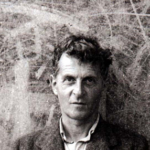By Feifan Wang, Professor, Jiangsu Normal University, Xuzhou, China
At the intersection of art and philosophy, a pioneering study offers us a fresh perspective on understanding dance. The article Philosophical manifestation in dance: bridging movement and thought (Trans/Form/Ação, vol. 47, no. 5, 2024) employs a phenomenological approach to examine the relationship between dance sports and philosophy, highlighting how dance articulates aesthetic emotions and encapsulates a variety of philosophical thoughts.
The author draws insights for contemporary dance from the study of ancient Chinese practices that integrated physical activity with moral cultivation. The philosophical potential of modern dance is often overlooked, and the author hopes that this research will draw attention to philosophical thinking in dance and deepen people’s comprehension of its intrinsic value. This paper broadens the discourse on dance as a philosophical inquiry, providing new perspectives on the role of physical expression in understanding complex philosophical ideas and emotions.
As society’s interest in the relationship between the body and philosophy grows, under the illumination of body aesthetics theory, the essence of dance art as an aesthetic object is the internalization of bodily aesthetics. Dance art as an aesthetic subject can generate self-awareness under the holistic function of the five senses—sight, hearing, smell, taste, and touch. “Dance art as an aesthetic activity not only includes the artistic language shaped by the dancer’s self-aesthetic, but also is inseparable from the audience’s appreciation and critique of the dance work” (Xiang, 2023, p. 45).
Dance, this vibrant visual art, is not only about the coordination of body movements and the display of rhythm; it also carries the expression of emotions and the communication of ideas. Philosophy, a discipline dedicated to exploring the essence of life and the mysteries of the universe, provides a rich foundation for thought and a source of creative inspiration for the art of dance.
The connection between the two is self-evident; they both reflect the inner world of human beings. Through the expression of body language, dance reveals the vitality of life and the harmony of the universe, involving discussions on fundamental philosophical issues such as life, time, and space. The research team, composed of scholars from diverse cultural backgrounds, employs a variety of research tools and methods to ensure the comprehensiveness and depth of the study.

Image: Pexels.
The research indicates that by integrating dance with philosophical thought, its artistic expressiveness can be enhanced, and a new avenue for personal self-exploration and expression can be provided. The author begins with a phenomenological perspective to examine the body language in dance. Phenomenology posits that “the concept of ‘body knowledge’ is particularly important. Knowledge acquired through the body is intuitive, practical, and experiential” (Wang 2023, p. 129). The author aims to discover an aesthetics of life through intuition, achieving a dual response of the body and spirit. This finding is not only instructive for dance education and practice but also opens up new possibilities for art therapy and cross-cultural communication.
Thus, the researcher demonstrates that the integration of philosophical ideas into dance not only elevates the artistic level of dance but also stimulates deep thinking among dancers and audiences. This fusion offers new perspectives for dance education and paves the way for new approaches in dance therapy and personal development (Zou, 2023, p. 84). They believe that the combination of dance and philosophy will have a positive impact on cultural and social development, and they call for future research to further explore the potential of this field, especially in terms of the interactive effects between creative expression and audience perception.
This paper delves into the historical roots of dance as a medium for philosophical expression, tracing back to ancient Chinese practices where dance was intertwined with moral and ethical training. These ancient traditions highlight the role of dance in fostering not just physical prowess but also spiritual and moral virtues (Yuan, 2023, p. 78). By revisiting these practices, the research provides a rich context for understanding how contemporary dance can similarly serve as a conduit for philosophical exploration.
In examining the phenomenology of dance, the study emphasizes the importance of body knowledge—understanding acquired through the body’s movement and experience. This approach underscores the idea that dance is not merely a physical activity but a profound mode of knowing and being. Through dance, individuals can access a form of knowledge that is deeply intuitive and experiential, allowing them to engage with philosophical questions in a uniquely embodied manner.
The research also highlights the role of the audience in the philosophical experience of dance. The appreciation and critique of dance by the audience are integral to the aesthetic activity. This dynamic interaction between the dancer and the audience creates a shared space for philosophical reflection, where the emotional and intellectual responses of the viewers contribute to the overall experience of the performance.
In conclusion, the integration of philosophical thought into dance offers a rich and multifaceted approach to understanding and experiencing both art and philosophy. This pioneering study expands the discourse on dance as a philosophical inquiry, providing new perspectives on the role of physical expression in understanding complex philosophical ideas and emotions. It calls for further exploration of this interdisciplinary field, highlighting the potential for dance to contribute to cultural and social development, as well as personal growth and healing. By bridging movement and thought, dance can become a powerful medium for philosophical reflection and a deeper appreciation of the human experience.
To read the article, access
WANG, F. Philosophical manifestation in dance: bridging movement and thought. Trans/Form/Ação [online]. 2024, vol. 47, no. 5, e02400248 [viewed 16 October 2024]. https://doi.org/10.1590/0101-3173.2024.v47.n5.e02400248. Available from: https://www.scielo.br/j/trans/a/QgY49r3wHYWFDVzKLnDXVtC/
References
WANG, Y. Q. The Paradigm Shift from “Body Aesthetics” to “Post-Body Aesthetics” and Its Internal Logic. Journal of Northwest University (Philosophy and Social Sciences Edition). 2023, vol. 53, no. 6, pp. 129-137.
XIANG, K. Aesthetic Experience of Dance Art from the Perspective of Body Aesthetics. Journal of Hubei University (Philosophy and Social Sciences Edition). 2023, vol. 50, no. 6, pp. 45-53.
YUAN, H., ZHANG, Y.Z. and WANG, R.J. The Great Beauty of Body Poetry and Painting Speaks for Itself—An Interview on Chinese Dance Aesthetics. Chinese Ethnicities. 2023, vol. 8, pp. 78-81.
ZOU, J. Dance Education that “Returns to the Body, Expresses the Self”—Also Discussing the Value and Methods of Dance Aesthetic Education. Shangwu. 2023, vol. 17, op. 84-88.
External links
Trans/Form/Ação – TRANS: https://www.scielo.br/trans/
Trans/Form/Ação – Journal: Instagram | Facebook | Academia.edu
About Wang Feifan
Wang Feifan is a professional teacher in the Dance Department of the Conservatory of Music of Jiangsu Normal University, and a member of the Chinese Dancers’ Association. Main research direction: professionalized performance theory research.
Como citar este post [ISO 690/2010]:



















Recent Comments